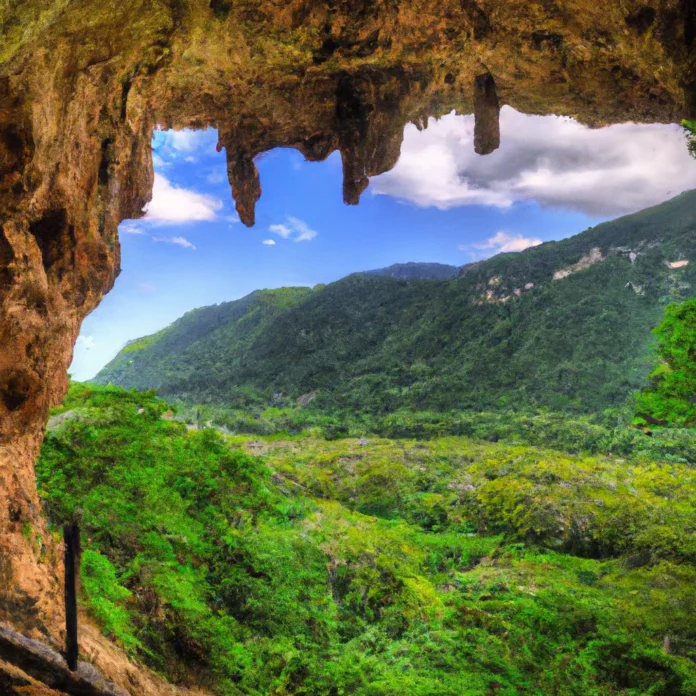Cueva Ventana and Cueva del Indio are two remarkable natural attractions located in the beautiful region of Arecibo, Puerto Rico. These caves not only showcase stunning geological formations but also offer significant historical and cultural insights into the island’s past. In this comprehensive article, we will delve into the details of each cave, their unique features, and the experiences they offer to visitors.
Cueva Ventana: A Natural Marvel
Location and Accessibility
Cueva Ventana, translated as “Window Cave,” is situated on a limestone cliff overlooking the Río Grande de Arecibo. Its geographical coordinates make it easily accessible from the main roads leading to Arecibo. The cave is part of a larger karst landscape typical of the region, characterized by its limestone formations and rich biodiversity. Visitors can reach Cueva Ventana via a short hike through the surrounding forest, which is an essential part of the experience.
Geological Significance
The cave’s formation dates back millions of years, a process shaped by erosion and the dissolution of limestone. The result is a stunning cavern with intricate stalactites and stalagmites, showcasing the natural beauty of the cave system. Geological formations within Cueva Ventana provide insight into the earth’s history and the processes that shaped the Caribbean landscape.
Cultural History
Cueva Ventana holds significant cultural importance. It is believed that the indigenous Taíno people utilized the cave for shelter and rituals. Evidence of petroglyphs can still be found on some walls, offering a glimpse into the spiritual life of the Taíno. The cave has served various purposes throughout history, from a hideout during the Spanish colonization to a natural landmark for locals.
Flora and Fauna
The surrounding area of Cueva Ventana is rich in biodiversity. The forest is home to numerous species of plants and animals, some of which are endemic to Puerto Rico. Birdwatchers can expect to see a variety of birds, including the Puerto Rican parrot, which is a symbol of conservation efforts on the island. The unique ecosystem surrounding the cave is a critical area for ecological studies and conservation.
Visitor Experience
Visitors to Cueva Ventana are treated to breathtaking views from the cave’s opening, which frames the lush landscape and the Río Grande below. Guided tours are available, providing valuable information about the cave’s geology, history, and ecology. Safety measures are in place, and it is recommended to wear appropriate footwear for the hike and the cave’s interior.
Cueva del Indio: A Historical Journey
Location and Access
Cueva del Indio, or “Indian Cave,” is located near the coastal cliffs of Arecibo. The cave is known for its dramatic entrance and expansive interior. Accessing Cueva del Indio requires a short walk along a rugged path that leads to the cave’s entrance. The coastal scenery adds to the allure of this natural wonder.
Historical Context
Cueva del Indio is famous for its historical significance. The cave features numerous petroglyphs carved by the Taíno people, depicting various symbols and figures that are believed to hold spiritual meanings. These carvings serve as a vital link to understanding the Taíno culture and their connection to the land.
Geological Features
The geological features of Cueva del Indio are equally captivating. The cave has expansive chambers, some of which are adorned with natural formations. The interplay of light and shadow within the cave creates a unique atmosphere that enhances its historical significance. The coastal erosion has also sculpted the surrounding cliffs, adding to the cave’s striking visual appeal.
Biodiversity and Conservation
Much like Cueva Ventana, the area surrounding Cueva del Indio supports a diverse range of flora and fauna. The coastal ecosystem is crucial for various species, especially birds. Conservation efforts are essential to protect the delicate balance of life in this region, highlighting the importance of sustainability in tourism.
Visitor Guidelines
Visitors to Cueva del Indio should respect the site’s cultural and natural heritage. It is advisable to follow designated paths and avoid touching the petroglyphs to preserve their integrity. Local guides often provide insights into the cave’s history and ecology, enhancing the overall visitor experience.
Comparative Analysis of Cueva Ventana and Cueva del Indio
Cultural Significance
While both caves hold immense cultural value, Cueva Ventana is more recognized for its geological formations and the breathtaking views it offers. In contrast, Cueva del Indio is celebrated for its historical petroglyphs and the insight they provide into the Taíno culture. Both sites contribute significantly to Puerto Rico’s cultural narrative and should be appreciated for their unique attributes.
Visitor Experience
The visitor experience at both locations is enhanced by guided tours that shed light on the geological and historical aspects of each cave. However, Cueva Ventana is often preferred for its panoramic views and the surrounding hiking trails. Cueva del Indio, with its rugged coastal access, appeals to those interested in history and archaeology.
Conservation Efforts
Both caves are under the purview of conservation efforts to protect their ecological and cultural significance. Awareness programs educate visitors about the importance of preserving these natural wonders and their historical artifacts. Sustainable tourism practices are vital in ensuring that future generations can enjoy these sites.
Conclusion
Cueva Ventana and Cueva del Indio are invaluable treasures of Puerto Rico, offering insights into the island’s natural beauty and rich history. Each cave provides a unique experience, from the breathtaking views of Cueva Ventana to the historical significance of Cueva del Indio. When planning a visit to Puerto Rico, these caves should be on every traveler’s itinerary.
For those looking to experience the beauty and culture of Puerto Rico, we recommend considering a guided tour that encompasses both Cueva Ventana and Cueva del Indio. For further information and to book your adventure, visit Puerto Rico Tour.





















